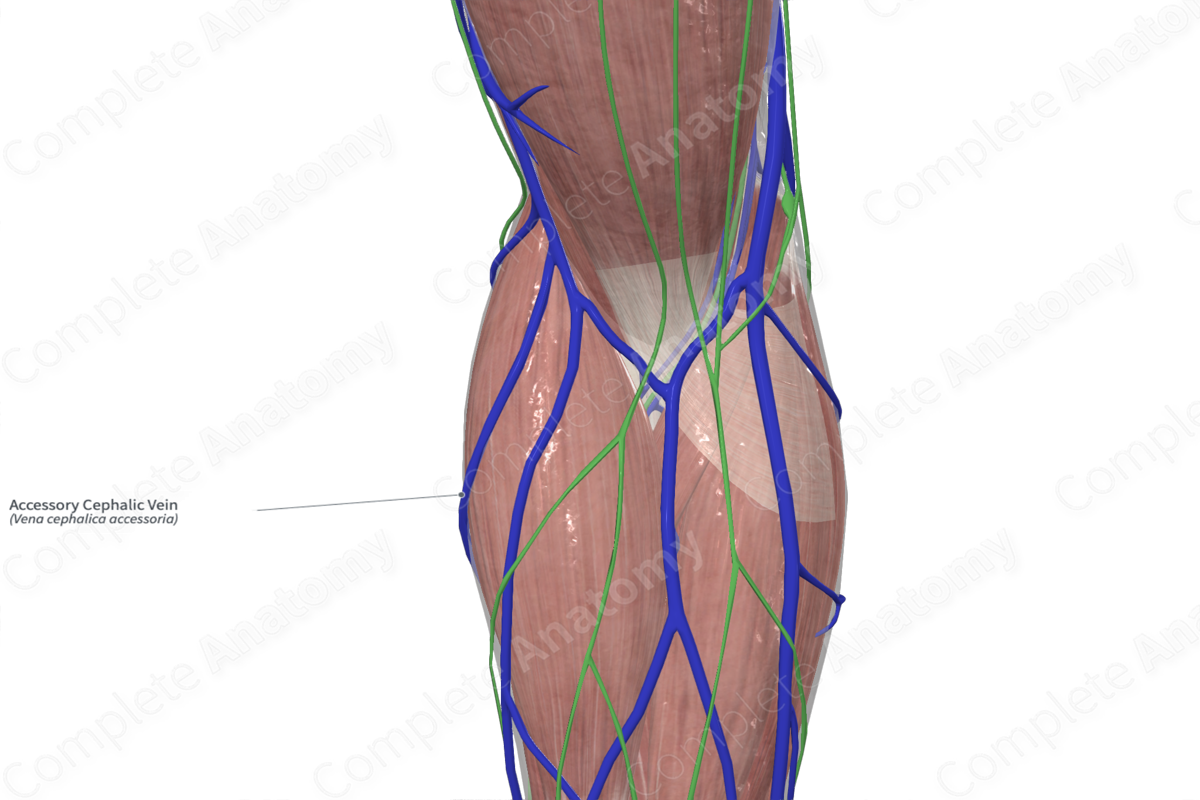
Quick Facts
Origin: Dorsal venous network.
Course: Superiorly along forearm.
Tributaries: No named tributaries.
Drainage: Hand and forearm.
Origin
The accessory cephalic vein originates from the medial aspect of the dorsal venous network (Standring, 2016). It may also arise from the:
- dorsal aspect of the distal forearm (40%);
- ulnar portion of the dorsal venous arch (30%);
- cephalic vein in the forearm (15%) (Tubbs et al., 2016)
Course
The accessory cephalic vein courses in a superolateral direction along the posterior aspect of the forearm. It ends by uniting with the cephalic vein below the elbow (Standring, 2016, Doyle and Botte, 2003).
Tributaries
There are no named tributaries.
Structures Drained
The accessory cephalic vein contributes to the drainage of the hand and forearm.
References
Doyle, J. R. and Botte, M. J. (2003) Surgical Anatomy of the Hand and Upper Extremity. LWW medical book collection: Lippincott Williams & Wilkins.
Standring, S. (2016) Gray's Anatomy: The Anatomical Basis of Clinical Practice. Gray's Anatomy Series 41 edn.: Elsevier Limited.
Tubbs, R. S., Shoja, M. M. and Loukas, M. (2016) Bergman's Comprehensive Encyclopedia of Human Anatomic Variation. Wiley.
Learn more about this topic from other Elsevier products
Cephalic Vein

The cephalic vein is a superficial vein in the arm that lies deep to the deep fascia after reaching the deltopectoral groove and finally pierces the clavipectoral fascia and empties into the axillary vein.




